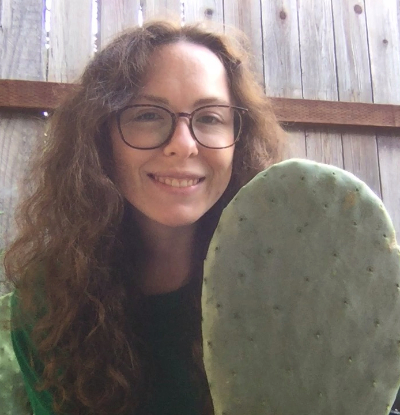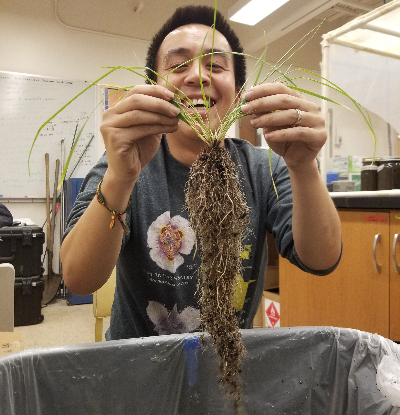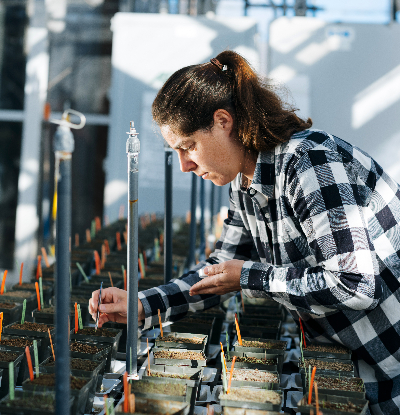Greenhouse Research Awards
The Greenhouse Research Award supports both undergraduate and graduate research by covering greenhouse recharge fees for student research. Selection will be based on the research proposal as well as past research experience. Funding comes from the Plant Sciences Fund.
The award application page offers more information about the award and its criteria.

Charlie Chesney, Opuntia solar panels
Transitioning away from fossil fuels is necessary to minimize the impacts of climate change. While wind and solar help us achieve a zero carbon goal, the installation of these energy sources harm species and habitats. For instance, installing utility-scale solar facilities clears native plants and creates the “lake effect” where birds mistake the solar panels for water bodies, resulting in impact-related injury and death. Harvesting electricity from living plants could help us reach climate goals while promoting biodiversity, rather than harming it. Some plants, including cacti species like Prickly Pears (Opuntia spp.), absorb CO2 at night and store it as malic acid, which is broken down by daylight to use CO2 in photosynthesis. Because cacti stems are opaque, light cannot pass from one side of the stem to the other, resulting in the malic acid being broken down at different rates. The difference in acidity, or pH, between the two sides of the stems creates a chemical potential charge separation, which can be measured as a voltage difference between the two sides of the stem. Living Solar Panels aims to understand this voltage difference and how it develops throughout the day with changing light and malic acid levels. This research is the first step in exploring the feasibility of harvesting electricity from cacti and establishing a new truly green energy source.

Justin Luong, California poppy seed sourcing
Deciding on the starting gene pool and seed sourcing location are currently some of the most debated topics in restoration ecology. Many believe that using local seed is ideal because seed from a particular region is more adapted to grow there, yet others believe it is important to use seeds from an area that has a climate similar to the future climate of the area to be restored. The California poppy, Eschscholzia californica, is a widespread species that is commonly used in restoration and exhibits a wide variety of morphologies. As such, the California poppy is an ideal species to test for local adaptations. We will grow eight different seed populations of California poppy at three distinct common gardens (Santa Cruz, Davis and Humboldt, CA) in order to determine whether the California poppy establishment and growth is affected by local seed sourcing.

Miranda Melen, Dittrichia soil feedback
Did you know that some plants can alter their soils to prevent other species from growing? What if a invasive species could do that too? We are trying to determine if stinkwort, a new invader in California, can change its soil to limit the growth of other species. Undergraduate senior thesis student Amy Chattaway and graduate student Miranda Melen are conducting an experiment to find out whether stinkwort can limit the growth of the naturalized grass, wild oats. We “conditioned” soils for this experiment by growing stinkwort in soil and then removing it and planting wild oats. We are expecting that if stinkwort changes the soil in a negative way for other species, that wild oats will be shorter and have fewer leaves than if it were growing in non-stinkwort-conditioned soils.
